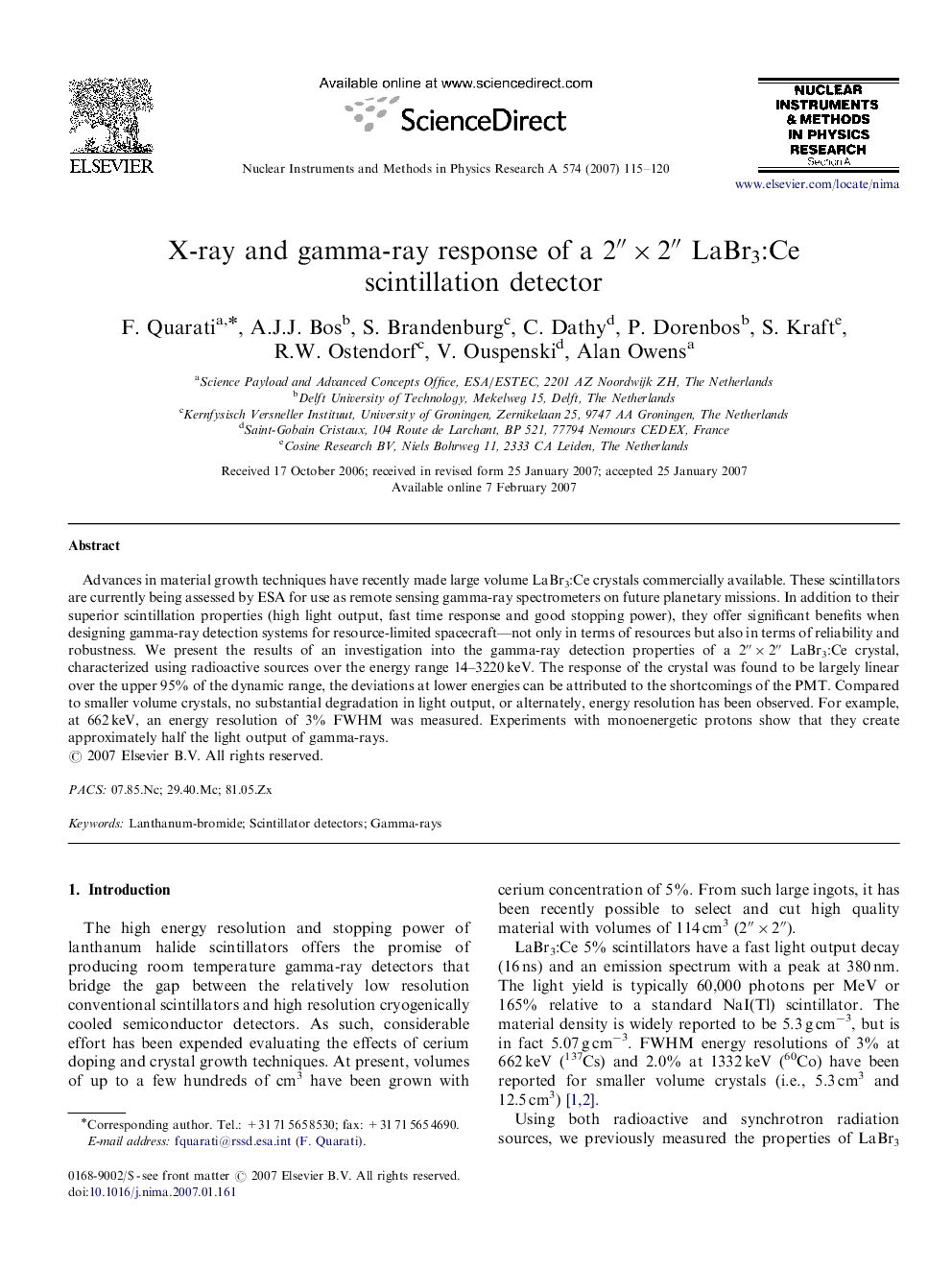| Article ID | Journal | Published Year | Pages | File Type |
|---|---|---|---|---|
| 1831717 | Nuclear Instruments and Methods in Physics Research Section A: Accelerators, Spectrometers, Detectors and Associated Equipment | 2007 | 6 Pages |
Abstract
Advances in material growth techniques have recently made large volume LaBr3:Ce crystals commercially available. These scintillators are currently being assessed by ESA for use as remote sensing gamma-ray spectrometers on future planetary missions. In addition to their superior scintillation properties (high light output, fast time response and good stopping power), they offer significant benefits when designing gamma-ray detection systems for resource-limited spacecraft-not only in terms of resources but also in terms of reliability and robustness. We present the results of an investigation into the gamma-ray detection properties of a 2â³Ã2â³ LaBr3:Ce crystal, characterized using radioactive sources over the energy range 14-3220 keV. The response of the crystal was found to be largely linear over the upper 95% of the dynamic range, the deviations at lower energies can be attributed to the shortcomings of the PMT. Compared to smaller volume crystals, no substantial degradation in light output, or alternately, energy resolution has been observed. For example, at 662 keV, an energy resolution of 3% FWHM was measured. Experiments with monoenergetic protons show that they create approximately half the light output of gamma-rays.
Related Topics
Physical Sciences and Engineering
Physics and Astronomy
Instrumentation
Authors
F. Quarati, A.J.J. Bos, S. Brandenburg, C. Dathy, P. Dorenbos, S. Kraft, R.W. Ostendorf, V. Ouspenski, Alan Owens,
